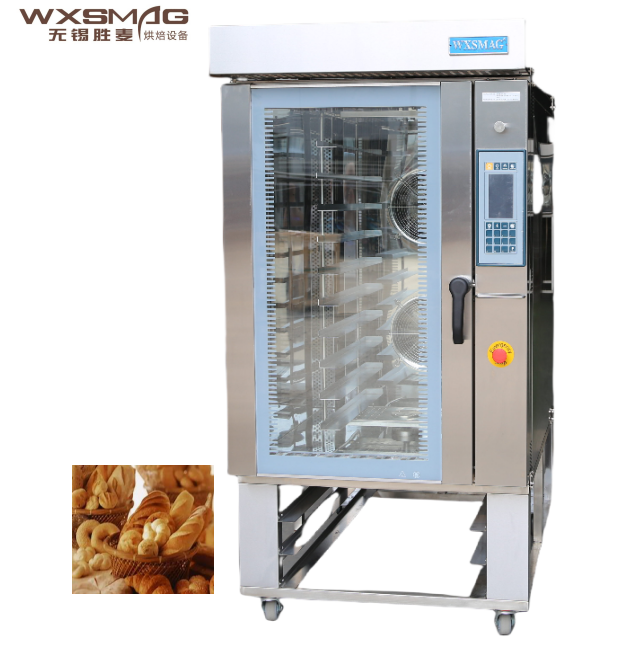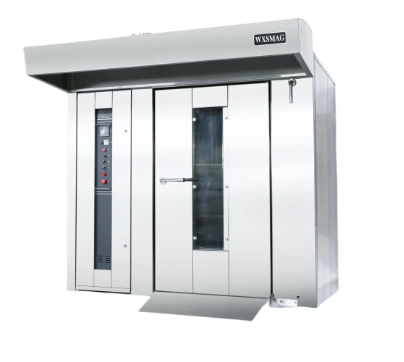Дефиниција и основни делови рерне на врели ваздух
Стерилизатор на сув ваздух Рерна на врели ваздух Peć za toplu vazduh је тип стерилизације помоћу суве топлоте. Направљена од чврстог ниског челика коришћеног за стерилизацију разних хируршких инструмената са и без завијања, стакла и прибора итд. Прибор - Индикатор, Стуб (ИСИ) и Елементи (по избору). Карактеристике укључују термички изоловану комору од нерђајућег челика, високе перформансе – грејни елемент до 300°C, и моторизован систем вентилатора са принудним ваздухом који осигурава брзо опоравање температуре и брзо проветривање након отварања врата. Утовар: Комора од нерђајућег челика. Широк опсег температура до 300°C. Грејни елемент од 300°C. Велики, лако читљив вакуум-флуоресцентни дисплеј. Интегрисани вакуум-флуоресцентни дисплеј омогућава кориснику да види стварну температуру са резолуцијом од 1°C на свим моделима, као и стање у комори, укључујући ограничење температуре постављене тачке и тренутну температуру. Напомена: Спецификације температуре испод су добијене коришћењем воде као оптерећења, са временом загревања приближно 2 сата. Четири полице са контратежима. Подесиве полице са отворима за утовар. Приступ по мери доступан, молимо вас да запитате. Линеарне 'балансиране' полице. Обезбеђују побољшану сигурност. Полице се могу подесити. Проверите белу вуну радне рукавице са црвеном гумом на површини која обезбеђује боље хватање. Сигурна, ненадгледана употреба. TA' Digital серија шталupa долази са додатном заштитом од прегревања. Дигитални микропроцесорски контролер. Достављени микропроцесорски контролер обезбеђује. Опциона мини тврди диск контролног система за пољопривреду и биологију®. Сума радног времена, радни део са флип фронтом. Спољашњи портови и заштита параметара. Спецификације. Спецификације температуре испод су добијене коришћењем воде као оптерећења са временом загревања приближно 2 сата. Тренутни дизајн укључује PID контролере за тачност ±0,5°C и двоструке кола за заштиту од прегревања.
Zahvaljujući činjenici da ne stvaraju produkt spaljivanja, ovi sistemi održavaju čistoću vazduha, za razliku od konvencionalnih rerni za pečenje, što ih čini neophodnim u farmaceutskim čistim sobama i pogonima za pakovanje hrane. Proizvođači vodeće prioriteta daju dvostranom izolacijom i unutrašnjosti od nehrđajućeg čelika kako bi ispunili standarde medicinskih uređaja ISO 13485, postižući smanjenje mikrobnosti za 99,9% na 160°C tokom 120 minuta.
Načelo rada tehnologije rerne sa vrelim vazduhom
Mehanizam konvekcije u raspodeli toplote
Peć sa toplim zrakom rade na principu prinudne konvekcije koja efikasno obezbeđuje ravnomerno sušenje. Ventrilator na zadnjoj strani raspodeljuje vrel vazduh, pa hrana brže izgubi vlagu! Ova karakteristika garantuje varijaciju temperature od ±2°C između polica, što ih čini idealnim za sterilizacione primene sa visokim toplotnim zahtevima. Električni i gasni grejači rade zajedno sa sistemom protoka vazduha, omogućavajući ravnomernu toplotnu prelaznost na medicinske instrumente, laboratorijsko staklo i industrijske delove.
Specifikacije raspona temperatura
Стандардни модели раде на температурама између 50°C и 300°C, при чему је најефикаснија температура обично 160–180°C, за стерилизацију негоривих материјала током циклуса од 2–4 сата. Напредни PID контролери омогућавају програмирање у корацима од 1°C са градијентима прилагођеним термосетним полимерима и/или дебелим металним деловима. Овај систем са два зона омогућава обраду два различита температурно ограниченa материјала истовремено у фабрици.
Mere energetske efikasnosti
Присиљена циркулација ваздуха смањује потрошњу енергије за 20–30% у поређењу са конвенционалним рернама са зрачењем. Изолационе плоче са 95% задржавањем топлоте минимизирају топлотне губитке, док се вентилатори са променљивом брзином прилагођавају протоку ваздуха на основу густине терета. Ова ефикасност се преводи у годишњу штедњу енергије од 580 до 920 долара по јединици у комерцијалним кухињама које обављају процесе деhidратације у великим количинама.
Рерна са врућим ваздухом у поређењу са конвенционалним пећима за пецивање
Упоређивање начина преноса топлоте
Kod rerisa sa vrućim vazduhom, za razliku od klasičnih rerisa koji se greju uglavnom zračenjem i prirodnom cirkulacijom vazduha, toplota se distribuira pomoću ventilatora ugrađenih u zidove rerisa, kroz prinudnu cirkulaciju vazduha. Ovaj mehanički protok vazduha smanjuje oscilacije temperature za 40—50% u poređenju sa starijim modelima, što omogućava brže kuvanje uz niži utrošak energije. Dok kod tradicionalnih uređaja korisnik često mora da okreće poslove radi ravnomernog pečenja, tehnologija vrućeg vazduha obezbeđuje ravnomerno zapečenje površine i nema potrebe za okretanjem jela.

Kuvanje i sterilizacija – primena
Пецива натопљена влагом су уметност за себе, користећи опсег од 300—500°F за шерпе, иако су процеси пецања у принципу познати, шерпе са врућим ваздухом су најбоље када је у питању стерилизација, коришћењем сувих циклуса од 320—400°F како би се уништиле бактерије на медицинским алатима током 120—150 минута по циклусу. Ова термална прецизност такође није погодна за деликатне колаче, али је неопходна у индустријским и лабораторијским условима где морате да будете сигурни да су микроби потпуно уништени.
Анализа комплексности одржавања
Ваздушне дахтичне пећи захтевају провере мотора вентилатора свака четири месеца и калибрацију протока ваздуха годишње да би остале ефективне – 78% корисника има веће трошкове одржавања у поређењу са традиционалним јединицама. Старије пећи зрачног типа могу прихватити јефтиније поправке елемената, али сваког месеца потроше 15-20% више енергије. Болнице преферирају конвекционе системе због поузданости стерилизације у односу на учесталост одржавања, иако за нижи технички захтев оператори у хранском сектору чешће бирају конвенционалне јединице.
Ваздушна дахтична пећ у техникама очувања
Ваздушне дахтичне пећи обезбеђују прецизну контролу околине која је неопходна за дуготрајно очување, тако што уклањају влагу без оштећења материјала осетљивих на топлоту. Механизам суве топлоте активно спречава раст микроорганизама, при чему се очувава интегритет материјала, чиме се ови системи чине важним за архивско складиштење и индустријске примене где контрола влажности одређује трајност.
Контрола влажности
Ови пећи штите производе од ко-контаминације циркулацијом топлоте (50 - 300 °C) како би одржали влажност на веома ниском нивоу. Ова метода сушења спречава ензимске реакције и раст плесни на органичним материјалима као што су лековите биљке и лекови, што је кључно приликом заштите хигроскопских супстанци. Истраживања показују да ниво влаге испод 5% ствара антимикробне и антифугалне услове, без додатка хемикалија.
Процес стерилизације медицинске опреме
Топлотно уништење путем оксидације - пећи са врулим ваздухом топлотно уништавају патогене на ножевима и хемијском посуду путем оксидативног процеса. За стерилизацију у сувом топлотном процесу алатки осетљивих на влагу, сув топлотни процес је ефикаснији од пара (обично 160°C у трајању од 60 минута). Ова некорозивна метода у складу је са ISO 17665, како би се осигурала стерилизација без корозије метала или остатака.
Упоређење са методама запушавања у вакууму
Za razliku od činjenice da vakuumsko konzervisanje predstavlja ništa više od izolacije od kiseonika, rerni sa vrelim vazduhom ubijaju mikroorganizme oksidacijom i istovremeno osušuju proizvod. Vakuum metode mogu dovesti do anaerobnog kvarenja usled mogućeg otkazivanja uređaja za zaptivanje, ali kod tretmana suvim toplim vazduhom sterilizacija je trajna. Nepropusni predmeti poput hirurških instrumenata i staklenih ampula bolje se održavaju kada se vazduh uklanja pomoću vrelom vazduha (vakuumsko zaptivanje još uvek je izbor za biološki materijal osetljiv na kiseonik).
Izbor rerne sa vrelim vazduhom: industrijska i domaća primena
Zahtevi za optimizaciju prostora
Комерцијални рерни за ваздушни топлотни уређаји имају већу висину коморе и системе уклонљивих решетки, што је идеално за болнице и друге великокапацитетне фацилитете за стерилизацију паром, који користе веће инструменте и захтевају уштеду вертикалног простора и мобилни транспорт посуда и стакла. Укупно гледано, док увезени модели обично имају средњу или већу величину, домаћи модели су компактни и погodni за радне површине од 20—40 литара. Јединице које се монтирају на зид са заузетом површином од ⌘0,5 m² популарне су у лабораторијским применама, док су рерни са више зона, које могу да суше терет и врше стерилизацију у оквиру заузете површине од 2 m x 1,5 m, предвиђене за фабрике прехрамбених производа.
Анализа трошкова и корисности за ресторани
Ресторани остварују 23% већи ROI у односу на традиционалне конвекционе моделе уз помоћ рерни на врући ваздух, захваљујући смањењу потрошње енергије за 40%. Уз уштеду од 1200 долара за ресторан средње величине, биће у стању да поврате инвестицију од 3,5—5 хиљада долара за 3 године. Комерцијална употреба= Смањење количине отпада за 50%—80% уз контролисано сушење и спори кување влаге током 24/7, што доводи до годишње уштеде од 8.000—12.000 долара у установама са великим обимом пословања.
Упоређивање стандарда безбедности
Индустријски модели су дизајнирани да одговарају ISO 13485 стандарду за стерилизацију и укључују троструку изолацију како би обезбедили температурну једноликост од ±2 °C, што је кључна спецификација за фармацеутске примене. Домаћи модели прате насмернице које су дефинисане стандардом UL 858 (кућни уређаји) са фокусом на системе за закључавање намењене деци и аутоматско искључивање уколико унутрашња температура пређе 300 °C (572 °F). Индустријски типови су такође сертификоване од стране треће стране, чиме се показује смањење микробних нечистоћа као што су бактерије и вируси за 99,9%, као што је наведено у NSF/ANSI 4 стандарду за индустријске пећи, док су примарни кућни модели у складу са IEC 60335-2-6 стандардом за отпорност на ватру.
Често постављана питања
За шта се користи ваздушна пећ?
Ваздушна пећ се користи за стерилизацију медицинских инструмената, лабораторијског стакла и других предмета без коришћења хемикалија, већ сушеним ваздухом.
Како ваздушна пећ ради?
Peći sa vrelim vazduhom rade koristeći prinudnu konvekciju za ravnomerno distribuiranje toplote. One koriste ventilatore za cirkulaciju vrućeg vazduha, čime se obezbeđuje ravnomerna raspodela toplote i efikasno sušenje.
Koji temperaturni opseg koriste peći sa vrelim vazduhom?
Peći sa vrelim vazduhom generalno rade u opsegu između 50°C i 300°C, pri čemu optimalna sterilizacija nastaje na temperaturi od 160-180°C tokom ciklusa od 2-4 sata.
Koje su prednosti peća sa vrelim vazduhom u poređenju sa konvencionalnim pećima?
Peći sa vrelim vazduhom nude energetsku efikasnost, ravnomernu raspodelu toplote i superiornu sterilizaciju u poređenju sa konvencionalnim pećima koje se uglavnom oslanjaju na zračenje toplote.
Садржај
- Дефиниција и основни делови рерне на врели ваздух
- Načelo rada tehnologije rerne sa vrelim vazduhom
- Рерна са врућим ваздухом у поређењу са конвенционалним пећима за пецивање
- Ваздушна дахтична пећ у техникама очувања
- Izbor rerne sa vrelim vazduhom: industrijska i domaća primena
- Често постављана питања

